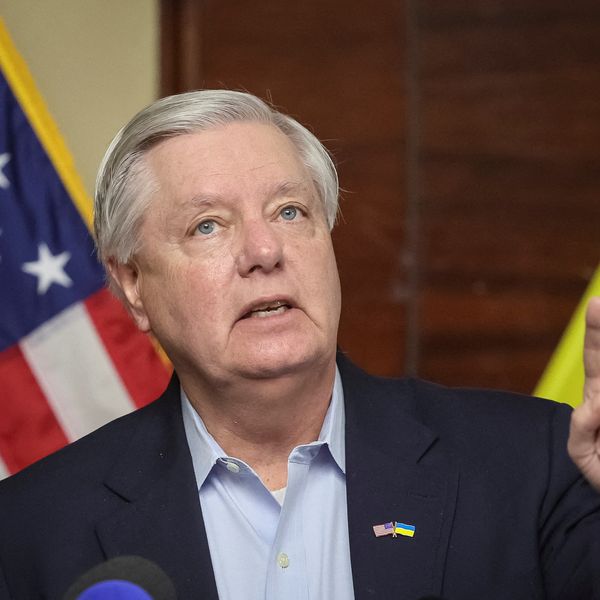The Biden administration’s executive order regarding climate change as a domestic and foreign policy crisis is long overdue. The order is remarkable for its scope and ambition. It requires each agency of the federal government to stop compartmentalizing climate change as a secondary issue separate from its primary mission.
By treating climate change as both a multi-generational and multi-dimensional problem, it is analogous to the famous NSC-68 of 1950, which transformed the U.S. strategy for confronting the Soviet Union by embracing rearmament and the development of thermonuclear weapons. Unfortunately, American strategists have not kept pace during the current climate emergency.
Biden’s executive order doesn’t mention “great power competition” with Russia or China, a concept that the national security establishment in Washington has been obsessed with waging. Its absence may inadvertently foster a belief that climate change is a distraction from “real” national security issues, and that the Department of Defense, for instance, can be satisfied with bolstering its Humanitarian and Disaster Relief Capabilities while hardening its worldwide infrastructure against extreme weather events. In fact, a sustained, genuine focus on mitigating or even reversing climate change will enhance the United States’ ability to triumph in any potential competition with China and Russia.
Any government policy that encourages investments in renewable energy, trains a workforce for new and demanding industrial tasks, rebuilds the U.S. national grid, and transforms its housing stock to ensure greater efficiency will also offer dividends for the United States’ dilapidated defense industrial base. As of now, the latter suffers from a lack of investment and skilled labor and cannot replace its major weapons systems in a timely fashion. One thing the Pentagon does not lack is money, some of which might be channeled to finding carbon-neutral alternatives to jet fuel. This would save the civilian aeronautical industry, much as the government supported it during the lean years after World War I.
The Pentagon must also reconsider its strategic priorities in a world where fossil fuels are no longer the basis of one’s economy. The locus of American strategy since the 1970s, the Middle East, will only matter as a vast solar energy farm. Meanwhile, other regions such as Latin America and East Asia become important because of their proven deposits of rare earth metals vital for lithium batteries, solar cells, and microchips.
The United States does have rare earth metals, but only government assistance and regulation will convince mine owners to operate in an environmentally sound fashion. Of course, the United States could avoid depending on vulnerable imports by simply recycling lithium batteries, an industry that does not yet exist, but which may prove essential for the battery-powered automobile fleets envisioned by both President Biden and General Motors.
Most importantly, the threat of climate change requires the United States to reconsider its relationships with both its allies and its adversaries. The Trump administration’s 2018 National Defense Strategy is laudable for its recognition of the value of U.S. alliances, but how does it serve U.S. interests to allow China to pose as the leader of the global campaign against climate change? Doing so may put intolerable pressure on the United States’ European allies to reconsider their relationships with Washington.
What of U.S. adversaries? Moscow appears to believe that Russia can benefit from climate change, but it is unclear how Russia will adapt to the problems of climate migration from its neighbors to the south and east. Today, Russia and China have essentially entered into a “marriage of convenience” to counter the United States, but climate change may do more than any U.S. actions to break up that marriage of convenience as migrants occupy the underpopulated Russian Far East.
China is a different story. At the moment, U.S. strategy toward China is divided between two schools of thought — what we call the early and later Cold War mindsets. The former assumes a zero-sum, existential struggle for global domination between a liberal, democratic, and capitalist bloc led by the United States and a China that is recreating Sino-centric world order with other nations reduced the status of tributaries. This was foundational assumption of the Trump administration’s approach to China.
The latter model of “peaceful co-existence” is analogous to the period of détente during the Cold War, and it is the path embraced by liberal circles in official Washington. It is likened to a cold peace in which each nation and its allies collaborate in areas of joint interest, including climate change, without sacrificing their core, geopolitical interests. The problems with this ostensibly reasonable approach are myriad. How does one reconcile the universalist claims of the United States with China’s regional, sphere-of-influence perspective, most notably in the South China Sea? Furthermore, what if tackling climate change is the core national security objective of both sides? Wouldn’t that force the United States to reassess its priorities? Are conducting freedom of navigation operations in the South China Sea, supporting democracy activists in Hong Kong, and combatting Chinese intellectual-property theft all of equal importance to confronting an existential threat?
Accordingly, the best model for U.S. strategy toward China is one of collective security. Under this model, the United States and China recognize that they are rivals rather than adversaries, and that the notion of conflict between them is as ridiculous as that of war between the United States and Europe or Japan after 1945. Make no mistake, collective security makes for strange bedfellows. Just as the United States had to work with Soviet Union to defeat Nazi Germany, it must cooperate with an expansionist Communist China to combat a mutual threat.
In a world of collective security, the United States and China would need to reassess what constitutes a genuine core interest while recognizing that they waste time bickering over issues that divert them from the real problems at hand. Even a world that manages to keep the increase average global temperatures to less than 2⁰ C will still have to cope with much unnecessary death and destruction. China and United States’ mutual dependence will therefore only grow as temperatures rise.
Unlike the fight against nuclear proliferation, which required nations to forgo certain actions, dealing with climate change also requires the active participation of every major nation — there can be no free-riding. China must stop its construction of coal-fired plants within China or other nations, but — as the “workshop of the world” it must cooperate with the United States and Europe to mass produce the technologies necessary for a global green economy even as the United States revitalizes its moribund domestic manufacturing capabilities.
U.S. strategists must recognize that climate change requires the United States to reorganize both its domestic and foreign policies. This does not entail unilateral disarmament or allowing China to run the world. Instead, the Biden administration’s efforts implicitly recognize two pieces of wisdom. First, we should fear our own mistakes more than the schemes of our rivals. Second, only a fool fights in a burning house, especially when that house is planet Earth.
The opinions they have expressed are their own and not necessarily those of the U.S. Government.














